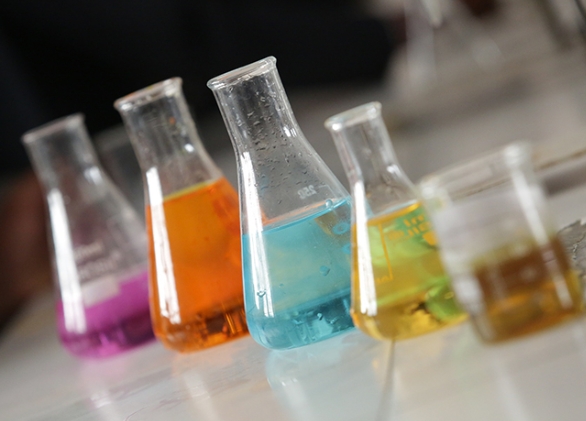Unveiling the Powerhouses: Exploring the Four Types of Chemical Agents
3 min read
Chemical agents play a pivotal role in various industries, ranging from pharmaceuticals and agriculture to manufacturing and research. Understanding the different types of chemical agents is crucial for professionals in these fields. In this comprehensive blog post, we will delve into the four primary types of chemical agents, their applications, and their significance in today's ever-evolving landscape.
- Reactive Chemical Agents:
Reactive chemical agents are substances that readily undergo chemical reactions with other compounds. They possess high reactivity due to their unstable nature, making them essential in numerous industrial processes. These agents can be classified into oxidizing agents, reducing agents, and acid-base agents.
- Oxidizing Agents: These agents facilitate oxidation reactions by accepting electrons from other substances. They are widely used in bleaching, disinfection, and combustion processes. Examples include hydrogen peroxide, chlorine, and potassium permanganate.
- Reducing Agents: In contrast to oxidizing agents, reducing agents donate electrons to other substances, leading to reduction reactions. They find applications in metal extraction, organic synthesis, and chemical analysis. Common reducing agents include sodium borohydride, hydrazine, and sulfur dioxide.
- Acid-Base Agents: Acid-base agents are crucial for maintaining pH balance in various industries. Acids donate protons (H+) while bases accept them. They are extensively used in chemical manufacturing, wastewater treatment, and pharmaceutical production. Examples include sulfuric acid, hydrochloric acid, and sodium hydroxide.
- Toxic Chemical Agents:
Toxic chemical agents are substances that can cause harm or pose a threat to living organisms, including humans, animals, and the environment. These agents can be classified into acute toxins and chronic toxins.
- Acute Toxins: Acute toxins cause immediate adverse effects upon exposure, even in small quantities. They include substances like cyanide, arsenic, and certain pesticides. Proper handling, storage, and disposal of acute toxins are crucial to prevent accidents and minimize their impact.
- Chronic Toxins: Chronic toxins, on the other hand, have long-term effects that may manifest after prolonged exposure or accumulation in the body. Examples include heavy metals like lead, mercury, and persistent organic pollutants (POPs). Strict regulations and monitoring are necessary to mitigate the risks associated with chronic toxins.
- Flammable Chemical Agents:
Flammable chemical agents are substances that can ignite and sustain combustion when exposed to a heat source or an open flame. They are widely used in energy production, transportation, and manufacturing processes. Understanding their properties and handling procedures is essential to prevent accidents and ensure workplace safety.
- Volatile Liquids: These liquids have low boiling points and readily evaporate, forming flammable vapors. Examples include gasoline, ethanol, and acetone. Proper storage, ventilation, and fire prevention measures are crucial when handling volatile liquids.
- Combustible Solids: Combustible solids, such as wood, paper, and certain metals, can ignite and sustain a fire under specific conditions. Controlling ignition sources, implementing fire-resistant materials, and practicing safe handling procedures are vital to prevent accidents involving combustible solids.
- Corrosive Chemical Agents:
Corrosive chemical agents are substances that can cause damage to living tissues or materials through chemical reactions. They are commonly used in cleaning products, metal treatment, and laboratory processes. Corrosive agents can be categorized into acids and bases.
- Acids: Acids have a pH below 7 and can corrode materials through proton donation. Examples include sulfuric acid, hydrochloric acid, and nitric acid. Proper handling, protective equipment, and neutralization procedures are essential when working with acids.
- Bases: Bases, with a pH above 7, can corrode materials through proton acceptance. Sodium hydroxide, potassium hydroxide, and calcium hydroxide are common examples. Similar precautions should be taken when working with bases to ensure safety and prevent damage.
Conclusion:
Chemical agents are diverse and indispensable in various industries. By understanding the four types of chemical agents - reactive, toxic, flammable, and corrosive - professionals can navigate their applications safely and effectively. Adhering to proper handling, storage, and disposal protocols is crucial to ensure workplace safety, protect the environment, and promote sustainable practices. Stay informed, stay safe, and harness the power of chemical agents responsibly.
